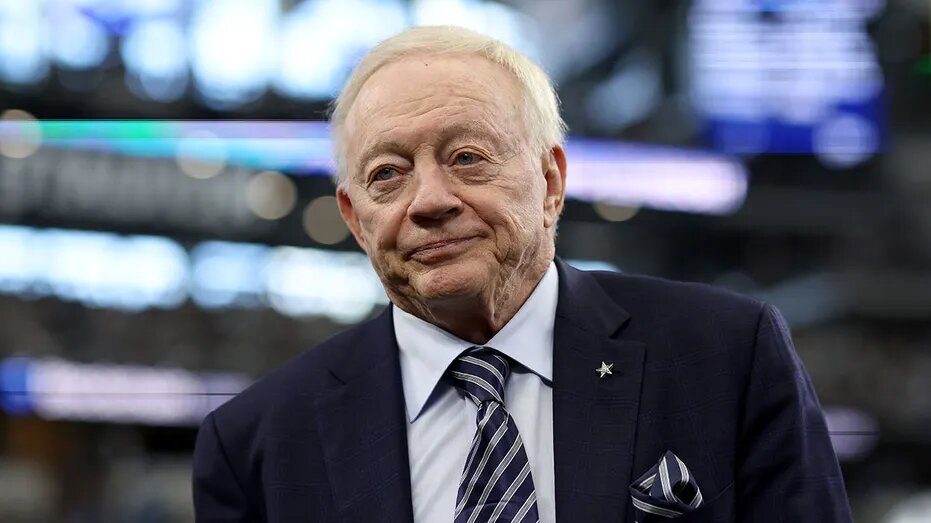
Gil Brandt, who in nearly 30 years as a scout and talent evaluator helped build the Dallas Cowboys into a National Football League powerhouse, died on Thursday in Dallas. He was 91.
His death, in hospice care, was announced by the Pro Football Hall of Fame, to which he was inducted in 2019.
Mr. Brandt joined the Cowboys in 1960, before their first season, and worked beside Tom Landry, the taciturn head coach, and Tex Schramm, the innovative president and general manager, to make them a perennial winner and a two-time Super Bowl champion. The Cowboys became known as “America’s Team.”
As the team’s vice president of player personnel, Mr. Brandt was known for expanding his scouting beyond major-conference schools. He drafted future stars like the wide receiver Bob Hayes, the defensive tackle Jethro Pugh, the offensive lineman Rayfield Wright and the linebacker Thomas (Hollywood) Henderson, who all played at historically Black colleges and universities.
Mr. Hayes, Mr. Wright, and the quarterbacks Roger Staubach and Troy Aikman are among the nine players whose drafting Mr. Brandt oversaw and who were later elected to the Hall of Fame.
But it was not only where Mr. Brandt and the Cowboys’ scouts discovered talent that separated Dallas from other teams. It was also the use of psychological tests to assess potential draft picks’ characters. In addition, his contribution to modern talent appraisal rested on the team’s forward-thinking use of technology.

At Mr. Schramm’s suggestion, Mr. Brandt began using a massive IBM computer in 1962 to evaluate prospects. He assigned numerical values to personality traits, including character and competitiveness, and to many physical qualities like quickness and strength. He then stored them on punch cards and loaded them into the computer.
In interviews, Mr. Brandt recalled Mr. Lombardi asking him: “What happened? Did your computer break down?”
It had not. The Cowboys had sent a doctor to evaluate Mel Renfro, a cornerback from the University of Oregon. Once satisfied that he was healthy, they selected Mr. Renfro, who would become a five-time All-Pro and be inducted into the Hall of Fame in 1996.
“It starts with the computer,” Mr. Brandt said before his Hall of Fame induction, adding, “and that was really the thing that set us apart from everybody.”
In an interview with The Wall Street Journal before his induction, he said: “They talk about analytics now. We did the same thing 50 years ago. Except we called it probabilities.”
Gilbert Harvey Brandt was born on March 4, 1932, in Milwaukee. His father, also named Gilbert, was district manager for National Food Stores. His mother, Loretta, was a homemaker.
Gil played defensive back and running back in high school. He attended the University of Wisconsin in Madison but left after two years and moved back with his parents.
He took a job providing cameras to hospital nurses to use to photograph babies. He would then develop and distribute the pictures. It was not a path to a football career; he began that career thanks to a family friend, Elroy Hirsch, who was known as Crazy Legs when he was a Los Angeles Rams receiver and who owned a local business. He recommended that Mr. Schramm, then the Rams’ general manager, hire Mr. Brandt as a part-time scout in the Midwest.
“I had a lot of time, and they were looking for somebody for $50 a weekend, or something like that,” Mr. Brandt told The Milwaukee Journal Sentinel in 2009. “In the spring I’d go see Marquette, Wisconsin, Northwestern. In those days, I don’t know if anybody knew a lot about it. If on a scale of what they do today is a 100, we were probably minus 10.”
Mr. Schramm had already left the Rams to become assistant director of sports at CBS, but in 1959 he joined the expansion Cowboys and asked Mr. Brandt to come along. Mr. Landry, then defensive coach of the New York Giants, soon joined them.
“The great thing that happened to me,” Mr. Brandt told The Journal Sentinel, “is we went to a place with an owner that had money” — the oilman Clint Murchison Jr. — “a G.M., Tex, who believed in scouting, and Tom was one of the greatest people of all time. We had more gimmicks than anybody in the world. It was easy. It was so less competitive then.”
Leave a Reply